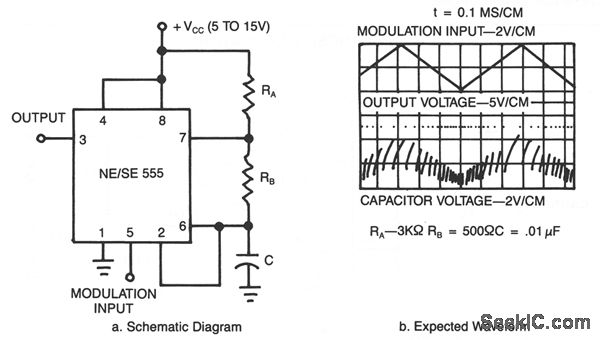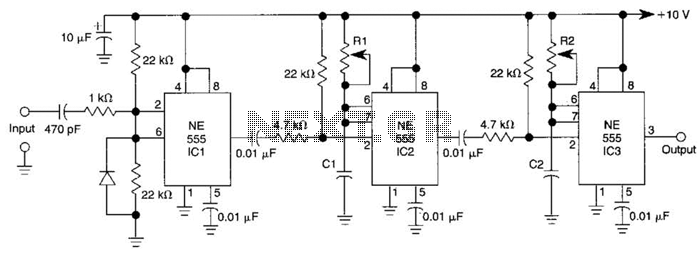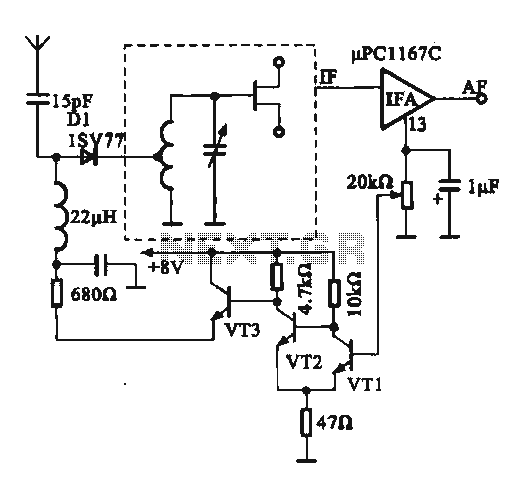
PULSE POSITION MODULATOR

This application utilizes a timer configured for astable (free-running) operation, with a modulating signal applied to the control voltage terminal. The pulse position changes in accordance with the modulating signal, as both the threshold voltage and the time delay are adjusted.
The circuit employs a timer IC, such as the 555 timer, configured in an astable mode to generate a continuous square wave output. In this configuration, the timer operates without any stable state, producing a waveform that oscillates between high and low states. The frequency and duty cycle of the output waveform are determined by the resistors and capacitors connected to the timer.
A key feature of this design is the application of a modulating signal to the control voltage terminal of the timer. This allows for dynamic adjustment of the pulse width, effectively modulating the output signal based on the input signal characteristics. The control voltage influences the threshold and trigger levels of the timer, which in turn alters the timing intervals of the output pulses.
The circuit can be further enhanced by incorporating additional components such as potentiometers for fine-tuning the resistance values, allowing for more precise control over the timing characteristics. Capacitors with different values can also be tested to observe their effect on the frequency and duty cycle of the output waveform.
Overall, this astable timer circuit with a modulating control voltage provides a versatile platform for generating variable pulse-width modulation (PWM) signals suitable for applications such as motor control, light dimming, and audio signal processing.This application uses the timer connected for astable (free-running) operation, with a modulating signal again applied to the control voltage terminal. The pulse position varies with the modulating signal, since the threshold voltage and the time delay is varied.
🔗 External reference
The circuit employs a timer IC, such as the 555 timer, configured in an astable mode to generate a continuous square wave output. In this configuration, the timer operates without any stable state, producing a waveform that oscillates between high and low states. The frequency and duty cycle of the output waveform are determined by the resistors and capacitors connected to the timer.
A key feature of this design is the application of a modulating signal to the control voltage terminal of the timer. This allows for dynamic adjustment of the pulse width, effectively modulating the output signal based on the input signal characteristics. The control voltage influences the threshold and trigger levels of the timer, which in turn alters the timing intervals of the output pulses.
The circuit can be further enhanced by incorporating additional components such as potentiometers for fine-tuning the resistance values, allowing for more precise control over the timing characteristics. Capacitors with different values can also be tested to observe their effect on the frequency and duty cycle of the output waveform.
Overall, this astable timer circuit with a modulating control voltage provides a versatile platform for generating variable pulse-width modulation (PWM) signals suitable for applications such as motor control, light dimming, and audio signal processing.This application uses the timer connected for astable (free-running) operation, with a modulating signal again applied to the control voltage terminal. The pulse position varies with the modulating signal, since the threshold voltage and the time delay is varied.
🔗 External reference





